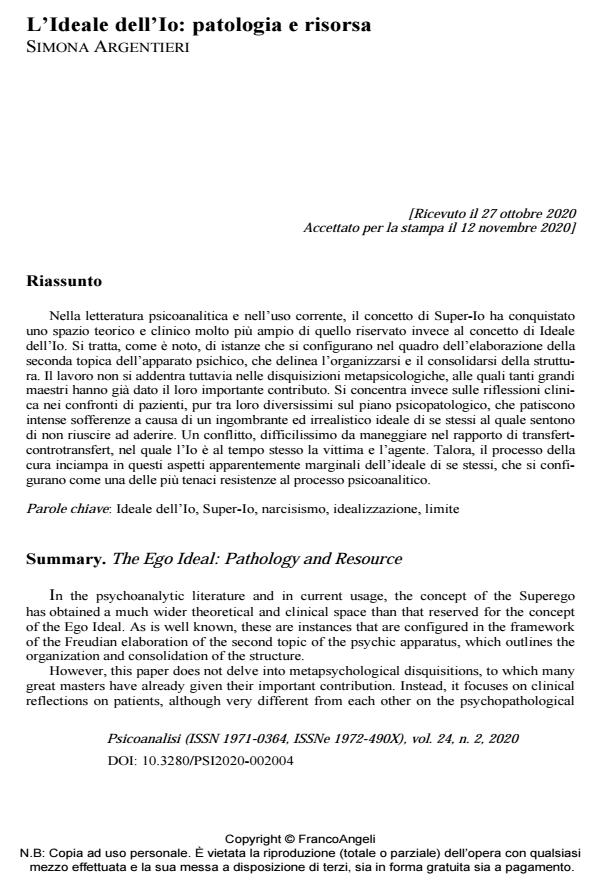The Ego Ideal: Pathology and Resource
Journal title PSICOANALISI
Author/s Simona Argentieri
Publishing Year 2021 Issue 2020/2
Language Italian Pages 22 P. 57-78 File size 225 KB
DOI 10.3280/PSI2020-002004
DOI is like a bar code for intellectual property: to have more infomation
click here
Below, you can see the article first page
If you want to buy this article in PDF format, you can do it, following the instructions to buy download credits

FrancoAngeli is member of Publishers International Linking Association, Inc (PILA), a not-for-profit association which run the CrossRef service enabling links to and from online scholarly content.
In the psychoanalytic literature and in current usage, the concept of the Superego has obtained a much wider theoretical and clinical space than that reserved for the concept of the Ego Ideal. As is well known, these are instances that are configured in the framework of the Freudian elaboration of the second topic of the psychic apparatus, which outlines the organization and consolidation of the structure. However, this paper does not delve into metapsychological disquisitions, to which many great masters have already given their important contribution. Instead, it focuses on clinical reflections on patients, although very different from each other on the psychopathological level, who undergo intense suffering due to a cumbersome and unrealistic Ego Ideal to which they feel unable to adhere. A conflict, very difficult to handle in the transference-countertransference relationship, in which the Ego is both the victim and the agent at the same time. Sometimes, the treatment process trips up over these apparently marginal aspects of the Ego Ideal, which are configured as one of the most tenacious resistances to the psychoanalytic process.
Keywords: Ego Ideal, Superego, narcissism, idealization, limit
Simona Argentieri, L’Ideale dell’Io: patologia e risorsa in "PSICOANALISI" 2/2020, pp 57-78, DOI: 10.3280/PSI2020-002004